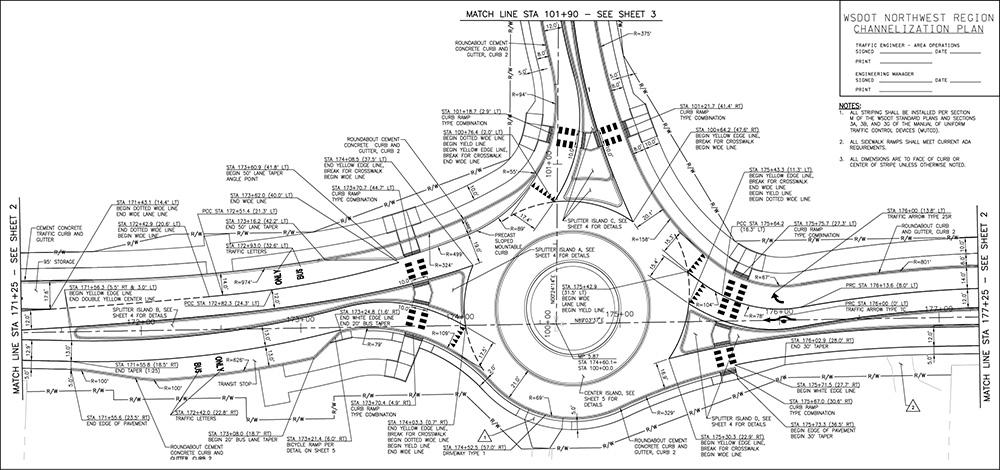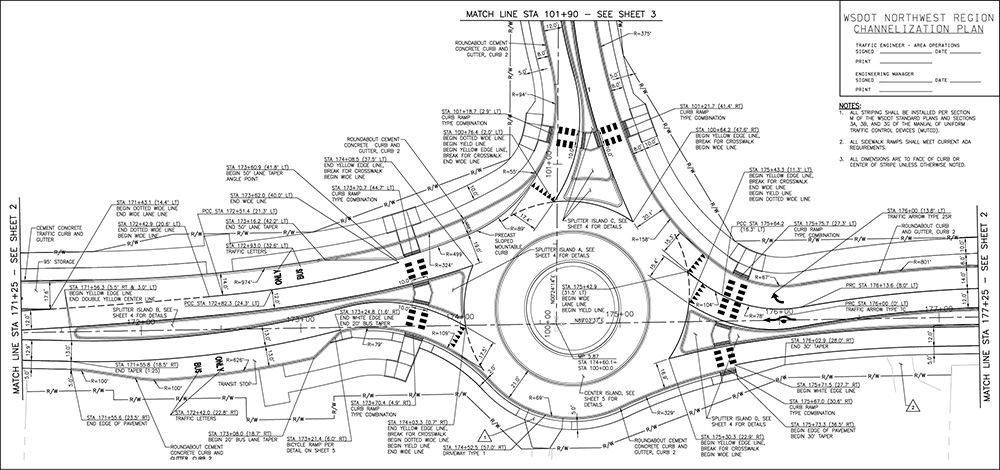Many issues come into play when designing a roundabout that serves multiple purposes and involves multiple stakeholders (City, WSDOT, utilities, developer) and an integrated design team. Add that it is on a state route, potentially with a tight schedule and phased expansion, and you have a critical path element→ coordination.
The Design Process
Channelization Plan for Approval
Construction projects on state routes require a Channelization Plan for Approval from the Washington State Department of Transportation (WSDOT) to ensure that changes to State Highways are consistent with accepted design guidance. For a roundabout, a Channelization Plan for Approval consists of a narrative about the project, plan sheets depicting the proposed improvements, striping details, and validation of the roundabout design elements, such as truck turning, speed curves, sight distance and natural path. WSDOT publishes a design manual that provides guidance on how roadway elements should be constructed. If a project element varies from the standard guidance, a deviation proposal must be submitted and approved by the State.

Design Phase
Under normal circumstances, the design phase begins after the Channelization Plan has been approved; when there is an accelerated schedule, the Channelization Plan and design phase happens concurrently. This presents significant challenges for coordination among project stakeholders keeping WSDOT, local agencies, retailers and affected businesses, design subconsultants, utility companies and the contractor on the same page.
Coordination is Key
With so many people to keep in the loop, especially when on an accelerated schedule, close coordination is vital to the success of a project. We use a responsibility matrix to keep everyone on the same page. The matrix can include all consultants and reviewers, and detailed primary and secondary responsibilities for design and approval. We recommend biweekly meetings with the owner, reviewers, subconsultants, and other stakeholders to provide all parties a chance to comment on and discuss the current design stage. These get-togethers help keep the project on schedule by replacing 30 percent or 60 percent formal submittals typical of projects, with roundtable discussion about the direction of the project design.
Coordination is key for any project, whether on a state route, accelerated timeline or not. Send weekly progress emails; have monthly, weekly, or even daily meetings or phone conferences if needed. Bottom line, do whatever it takes to stay on the same page and make the project successful.

